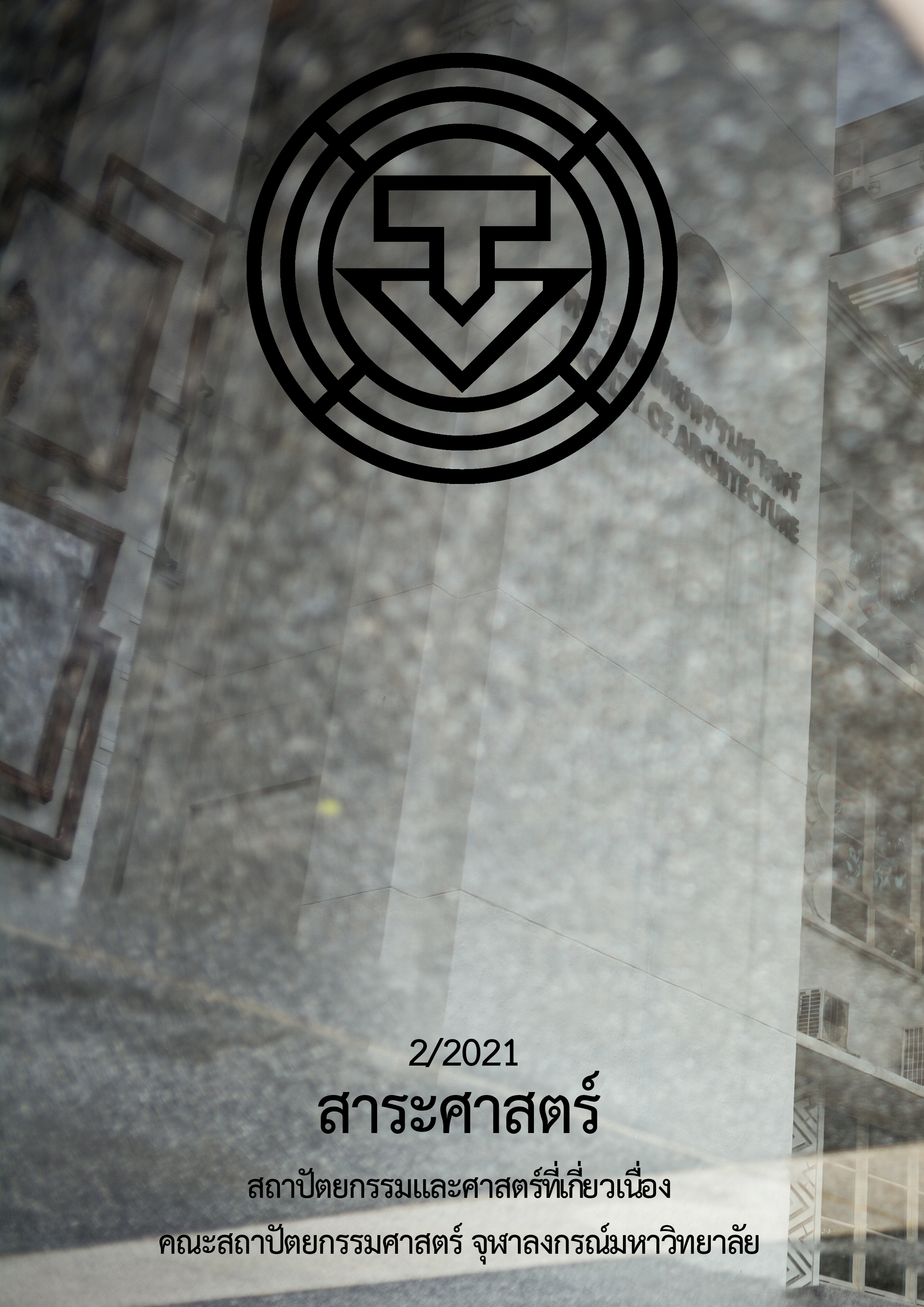Characteristics of Green Spaces in Condominiums Submitted for Approval of Environmental Impact Assessment Report during 2014 – 2019 in Bangkok Metropolitan Area
Main Article Content
Abstract
Green spaces are one of the indicators of a residence's well-being. The objectives of this research are to categorize the characteristics of green space in condominium projects in Bangkok, to collect data from the Environmental Impact Assessment Report from 2014 to 2019, and to focus on economy class and main class projects, there are 175 projects in total. Each of these projects is classified according to its price level as small, medium, or large. Using a comparative analysis which are two major types between the price level, project size with characteristics of project green area designing, and correlating to the regulations.
According to the study, 529 condominiums applied for EIA during the time period studied, and they can be classified as follows: 1) there are 41 percent in low-cost projects, 59 percent mid-priced projects. Both groups are divided into large, medium, and small projects, with 43 percent, 31 percent, and 26 percent, respectively. 2) Green areas classified into five characteristics in the Environmental Impact Assessment: usage characteristics, surface characteristics, area scale, location area, plant characteristics plant characteristics 3) High-priced condos have 15% more green space per project area than low-priced condos. 4) Larger scale projects have 17% higher in proportion of green areas. 5) Moreover green space, which exceeds the EIA's minimum requirement, found in low price projects are more than higher price projects. For the open space, the majority of projects provided more than 67 percent. This study discovered that the green area provided in condominiums are more than green space requirement ratio of EIA which are 1 resident : 1 square meter, although the exceeded amount are not as high when compare with other criteria..
According to the study, the characteristics provided of green area in condominiums depends on price level and project size; However, in the majority of condominiums have more green space than they required. This information is critical for promoting green space development for high rise residence, especially for many small and low-cost projects, by developer which is selling point and improve the quality of life for people who live in condominiums.
Article Details
References
กรุงเทพมหานคร. (2562). จำนวนและสัดส่วนพื้นที่สีเขียวในกรุงเทพมหานคร. สืบค้นเมื่อ 3 กรกฎาคม 2563, จาก http://www.onep.go.th/env_data/2019/
คณิศร์ อภิสิทธิพิชญ์. (2559). ความพึงพอใจของผู้อยู่อาศัยต่อการออกแบบทางกายภาพในโครงการคอนโดมิเนียมระดับราคาปานกลางและระดับราคาสูง: กรณีศึกษา โครงการ เดอะ แชปเตอร์วัน แคมปัส ลาดพร้าว 1และโครงการ เดอะ รีเซิร์ฟเกษมสันต์ 3 .(วิทยานิพนธ์ปริญญามหาบัณฑิต, จุฬาลงกรณ์มหาวิทยาลัย).
DD Property. (2562). พฤติกรรมผู้บริโภค “เปลี่ยน” คอนโดฯแต่ละ Segment บ่งบอกความต้องการซื้ออย่างไร? สืบค้นเมื่อ 21 ตุลาคม 2562, จาก https://www.ddproperty.com/
Thinkofliving. (2562). ประเภท Segment ของคอนโดมิเนียมและบ้านแนวราบ กับการรีวิวเจาะลึก. สืบค้นเมื่อ 20 ตุลาคม 2562, จาก https://thinkofliving.com/
รายงานการประเมินผลกระทบสิ่งแวดล้อม. (2563). สํานักนโยบายและแผนทรัพยากรธรรมชาติและสิ่งแวดล้อม. ฐานข้อมูลรายงานการวิเคราะห์ผลกระทบสิ่งแวดล้อมของโครงการประเภทอาคาร การจัดสรรที่ดิน และบริการชุมชน. สืบค้นเมื่อ 20 มกราคม 2563, จาก http://eia.onep.go.th/
Livinginsider. (2562). 8 ระดับ Segment คอนโด ในเมืองไทย. สืบค้นเมื่อ 21 ตุลาคม 2562, จากhttps://www.livinginsider.com/inside_topic/
ไอริณ ภานุวัฒน์วนิชย์. (2557). คุณภาพชีวิตของผู้อยู่อาศัยที่เกิดจากพื้นที่สีเขียวภายในโครงการหมู่บ้านจัดสรร ระดับราคาปานกลาง.(วิทยานิพนธ์ปริญญามหาบัณฑิต, จุฬาลงกรณ์มหาวิทยาลัย).
Home247. (2562). การแบ่ง SEGMENT คอนโดที่น่าสนใจ. สืบค้นเมื่อ 22 ตุลาคม 2562, จาก https://www.home247.co/


